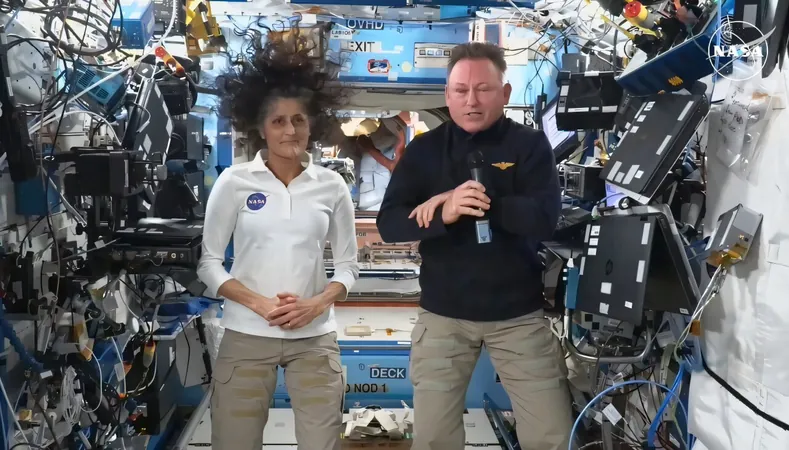
NASA Delays Astronauts' Return from Space Again—What Does That Mean for Future Missions?
2024-12-18
Author: William
Introduction
In a surprising development, NASA has announced that two U.S. astronauts stranded aboard the International Space Station (ISS) will remain in orbit until at least late March 2025. This latest delay marks a significant shift in their original mission timeline, which had anticipated the astronauts returning to Earth after just eight days.
Background on the Mission
Veteran astronauts Butch Wilmore and Suni Williams initially arrived at the ISS in June 2024, flying on Boeing's Starliner spacecraft. However, complications arose with the Starliner's propulsion system during its transit to the space station. After thorough evaluations and testing, NASA decided to alter the mission strategy completely, opting to bring the Starliner back to Earth without its crew.
New Plans for Return
Instead, Wilmore and Williams are set to return via SpaceX's Crew-9 mission. Crew-9 docked at the ISS in late September 2024, with available empty seats for the two astronauts. The latest plan dictated that all four astronauts onboard Crew-9 would return to Earth in February 2025, but that has now changed.
Impact of Crew-10 Mission Delay
NASA announced that the upcoming Crew-10 mission, which is intended to rotate crew members and relieve Crew-9 along with the stranded astronauts, has been pushed back to launch no earlier than March 2025. This delay will result in Wilmore and Williams logging over nine months in space—a stark contrast to their initial eight-day itinerary.
Logistical Challenges and Future Implications
The extension of their stay raises important questions about both the logistics of manned spaceflight and the long-term sustainability of ISS missions. SpaceX, led by billionaire entrepreneur Elon Musk, has been proactive in maintaining a schedule of regular crew rotations to the ISS every six months.
Conclusion and Future Outlook
Interestingly, this scenario sheds light on the complexities involved in space missions, particularly those collaborating between government agencies and private enterprises. As teams work to finalize the spacecraft processing for Crew-10, the implications for future missions, including potential delays and the capabilities of the ISS, could be significant.
As the astronauts adjust to their extended time in microgravity, the anticipation builds around how this challenge will influence NASA's strategy for ongoing manned missions in an era where commercial spaceflight is becoming increasingly prevalent.









 Brasil (PT)
Brasil (PT)
 Canada (EN)
Canada (EN)
 Chile (ES)
Chile (ES)
 España (ES)
España (ES)
 France (FR)
France (FR)
 Hong Kong (EN)
Hong Kong (EN)
 Italia (IT)
Italia (IT)
 日本 (JA)
日本 (JA)
 Magyarország (HU)
Magyarország (HU)
 Norge (NO)
Norge (NO)
 Polska (PL)
Polska (PL)
 Schweiz (DE)
Schweiz (DE)
 Singapore (EN)
Singapore (EN)
 Sverige (SV)
Sverige (SV)
 Suomi (FI)
Suomi (FI)
 Türkiye (TR)
Türkiye (TR)